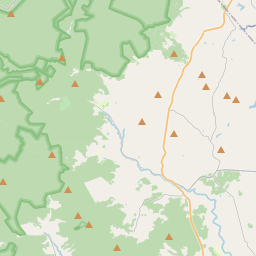Inscription
Shenandoah National Park
"Laws and generally accepted customs" When Shenandoah first welcomed visitors in 1936, Virginia was a "Jim Crow" state, its laws requiring segregation of the races. This created a dilemma for the National Park Service and the Department of the Interior. As managers scrambled to provide lodging, campgrounds, and other amenities, Secretary of the Interior Harold Ickes prodded them about their plans for black visitors.Ickes was a Civil Rights advocate. When African American singer Marian Anderson was banned from singing at Constitution Hall, Ickes arranged her famous concert at the Lincoln Memorial. Ickes's beliefs were at odds with the policy of the NPS which called for separate facilities, to "conform to the generally accepted customs long established in Virginia."
Ickes agreed to follow the policy, but continued to argue for an end to segregation in national parks. The Lewis Mountain development opened in 1939 for the "exclusive use of negroes." Throughout Shenandoah, signs and maps directed visitors to "White Only" and "Negro" areas. Complaints rolled in.
In that same year, Ickes ordered the beginning of gradual desegregation, opening Pinnacles Picnic Grounds to all visitors. Finally in 1950 Shenandoah National Park's facilities were legally integrated, nearly a decade and a half before other
public areas in Virginia would be forced to desegregate by the 1964 Civil Rights Act.
"It was a hopping joint!"Lloyd Tutt managed Lewis Mountain from 1941 to 1953, creating a fun and relaxing atmosphere for both locals and tourists, many returning year after year. Lewis Mountain became so well known for its fabulous food that Tutt relented and allowed whites to use the dining room.
"My boss said all I had to do was keep the colored people separate from the white people. Although I kept the lodge and campground separate, whites came to our dining room because of the food."
The family of Chester A. Franklin, publisher of Kansas City's The Call, a prominent Black newspaper, vacationed at Lewis Mountain regularly. President Harry S Truman visited twice with Mr. Franklin at Lewis Mountain. He was accompanied by Brigadier General Benjamin 0. Davis Jr., the U.S. Army's first African American general. The three gentlemen and their families ate together at Lewis Mountain Lodge.
(bottom panel photo captions) · "It was a relief for us... we had free run... and we were treated in a way that American citizens should be treated."-Lewis Mountain visitor, 2010
· "Everyone had fun, enjoyed the scenery and each other. Tired people... left there relaxed and happy."-Lloyd Tutt, far left, poses with three
unknown visitors.
Details
| HM Number | HM2H4D |
|---|---|
| Tags | |
| Placed By | National Park Service, U.S. Department of the Interior |
| Marker Condition | No reports yet |
| Date Added | Saturday, May 25th, 2019 at 2:01pm PDT -07:00 |
Pictures
Locationbig map





| UTM (WGS84 Datum) | 17S E 720129 N 4257160 |
|---|---|
| Decimal Degrees | 38.43560000, -78.47795000 |
| Degrees and Decimal Minutes | N 38° 26.136', W 78° 28.677' |
| Degrees, Minutes and Seconds | 38° 26' 8.16" N, 78° 28' 40.62" W |
| Driving Directions | Google Maps |
| Which side of the road? | Marker is on the right when traveling North |
| Closest Postal Address | At or near , , |
| Alternative Maps | Google Maps, MapQuest, Bing Maps, Yahoo Maps, MSR Maps, OpenCycleMap, MyTopo Maps, OpenStreetMap |
Is this marker missing? Are the coordinates wrong? Do you have additional information that you would like to share with us? If so, check in.
Maintenance Issues
- What country is the marker located in?
- Is this marker part of a series?
- What historical period does the marker represent?
- What historical place does the marker represent?
- What type of marker is it?
- What class is the marker?
- What style is the marker?
- Does the marker have a number?
- What year was the marker erected?
- This marker needs at least one picture.
- Can this marker be seen from the road?
- Is the marker in the median?

Comments 0 comments